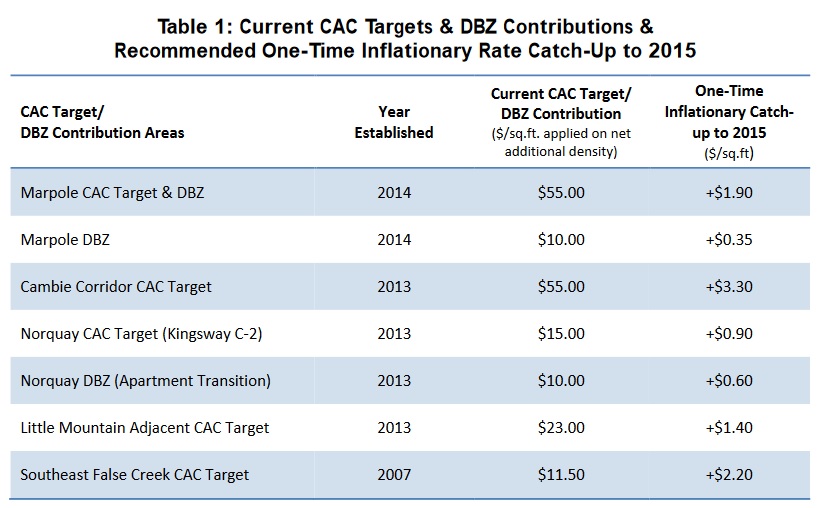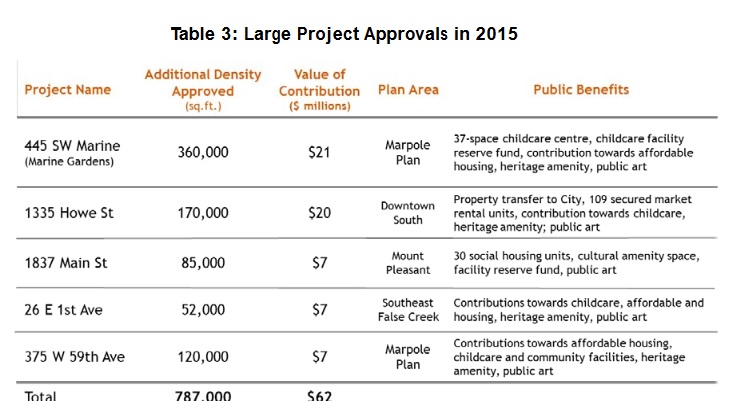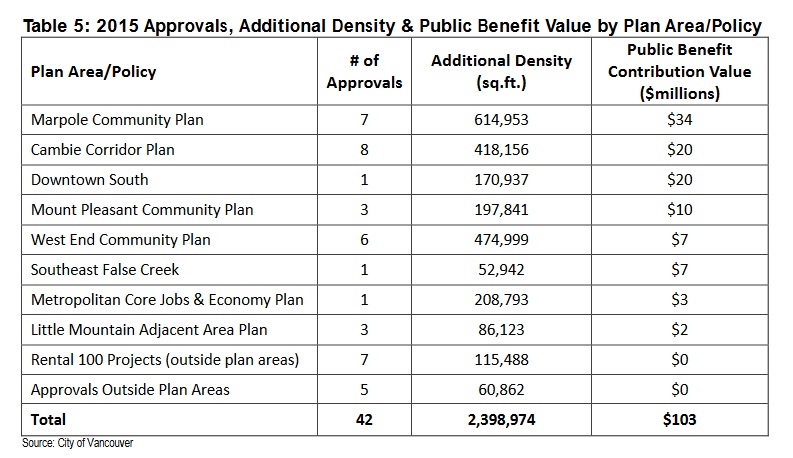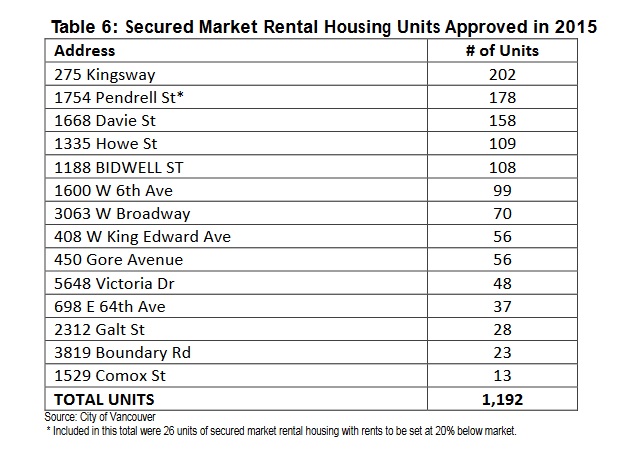Change Coming for City of Vancouver’s CAC Policy
Next week, City of Vancouver council will review a policy report that recommends changes to the Community Amenity Contribution (CAC) policy as part of an ongoing initiative to streamline and simplify the City’s overall approach to development contributions.
The major recommendations on changes to the CAC policy include:
1. Adjusting CAC target rates annually for inflation
One of the major recommendations is that current CAC fixed target rates will now adjust annually with inflation, just as the current DCL rates do. The proposed inflation rate would be based on a third party index for property and construction costs and would change to reflect “market conditions”. Moreover, there will be a “One-time Inflationary Adjustment Catch-Up to 2015”, as the areas with fixed rates have not been adjusted for several years. Here is a table showing current and proposed new CAC target rates:
The report indicates that the City will minimize any potential negative impacts, either on the
development industry or on the City’s ability to adjust CAC targets and DBZ (Density Bonus Zone) contributions, by:
- reviewing recommended adjustments with industry stakeholders before applying annual inflationary rate adjustments;
- carrying out periodic updates to recalibrate CAC targets and DBZ contribution rates. The recalibration of rates would be established by updating the public benefit strategy growth costs and then testing development viability for appropriate growth cost recovery
- monitoring the pace of rezoning and redevelopment activity in each CAC target and DBZ contribution areas.
2. Administrative Updates to City-wide CAC Policy
The report also identifies some changes to the current overall CAC policy, including:
Removing $3.00 per SF CAC target for Standard Rezonings, and the 1.35 FSR exemption on small site rezonings
The $3.00 per SF CAC rate had been in place since 1999, and had only been used 22 times in 17 years – half of those for office buildings. The City is now proposing to remove this target rate and use a negotiated CAC approach.
Clarifying that CAC payments are due prior to rezoning enactment
Previously, cash-in-lieu payment of CACs could be made at either rezoning enactment or building permit issuance. The new policy will now require payment at rezoning enactment only.
The full report can be viewed here: http://council.vancouver.ca/20160531/documents/p1.pdf
Coincidentally, Council will also receive the Annual Report on Community Amenity Contributions and Density Bonusing for 2015 (the report can be viewed here: http://council.vancouver.ca/20160531/documents/a1.pdf) . Here are a few highlights:
- in 2015, there were 42 rezoning approvals resulting in 2.4 Million SF of additional density
- these rezonings generated a total of $103 Million in CACs
- by comparison, there were 1,600 building permits under existing zoning
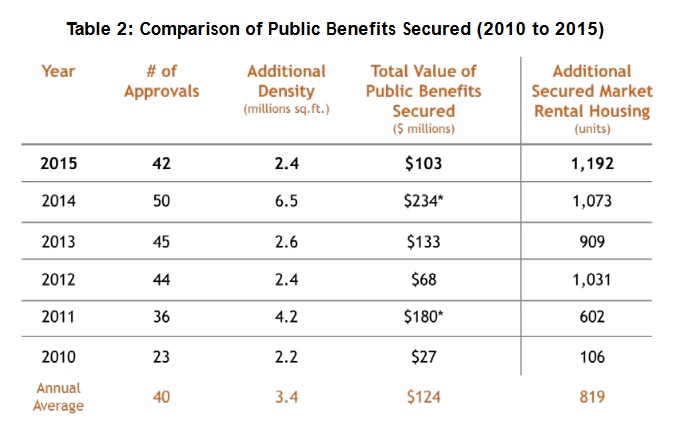
- in 2015, five large projects accounted for 65% of all CACs:
- Cambie Corridor, Marpole and West End accounted for over 50% of rezoning density and CACs
- There were 14 secured market rental housing projects approved in 2015, representing 1,192 units
- in 2015, applications for density transfers totaling 160,000 SF were approved, reducing the heritage density bank down to 650,000 SF.
-
Affordable housing was the largest recipient of public benefit contributions (56%), followed by childcare facilities (19%), heritage, community facilities, and parks/open space/public art.


